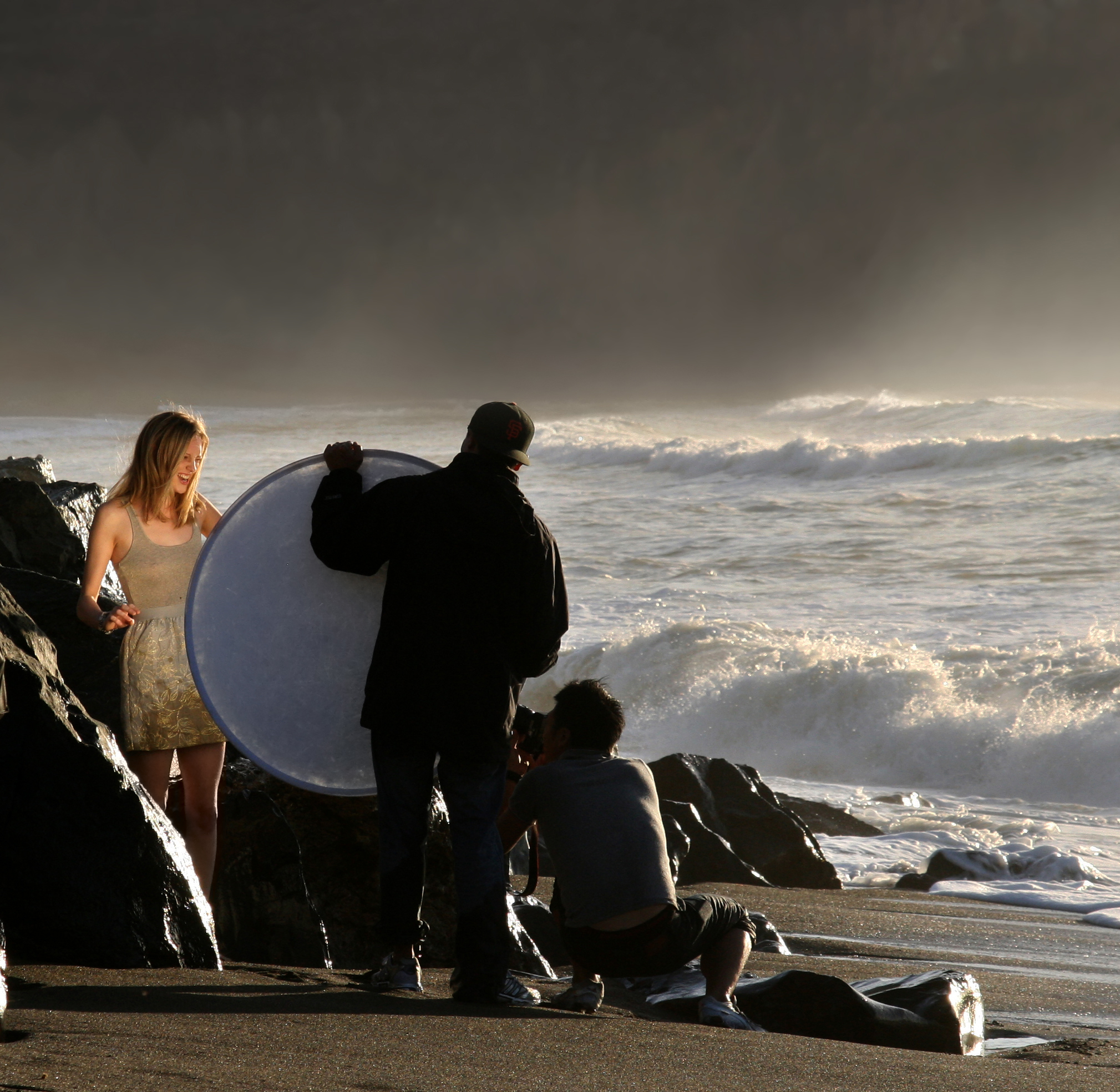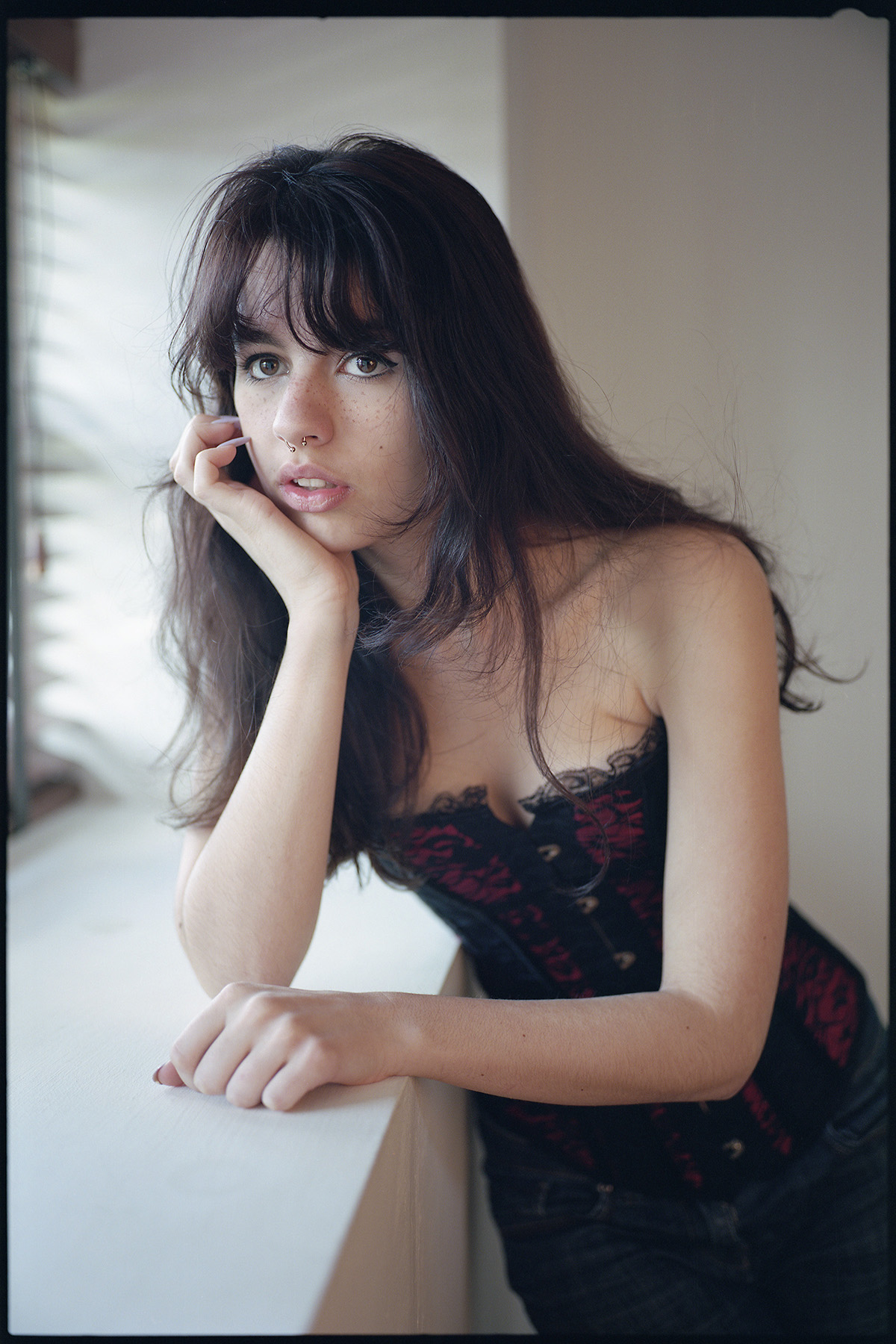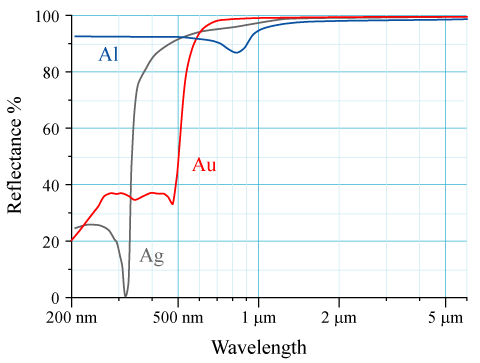|
Bounce Board
In photography and cinematography, a reflector is an improvised or specialised reflective surface used to redirect light towards a given subject or scene. Types Apart from certain highly specialized components found in enlargers, projectors and scanners, photographic reflectors fall into two main groups: Lamp reflectors Similar to a domestic lampshade, these reflectors are fixed to an artificial light source (for example, a filament bulb or flash tube) to direct and shape the otherwise scattered light, reflecting it off their concave inner surfaces and directing it towards the scene to be photographed. Although there are a large number of variants, the most common types are: * spherical, short-sided, giving a relatively broad spread of light; * parabolic, providing a tighter, parallel beam of light. The ''reflector factor'' is the ratio of the illumination provided by a lamp fitted within a reflector to the illumination provided without any reflector fitted. A matte ... [...More Info...] [...Related Items...] OR: [Wikipedia] [Google] [Baidu] |
Parallel (geometry)
In geometry, parallel lines are coplanar straight lines that do not intersect at any point. Parallel planes are planes in the same three-dimensional space that never meet. ''Parallel curves'' are curves that do not touch each other or intersect and keep a fixed minimum distance. In three-dimensional Euclidean space, a line and a plane that do not share a point are also said to be parallel. However, two noncoplanar lines are called ''skew lines''. Parallel lines are the subject of Euclid's parallel postulate. Parallelism is primarily a property of affine geometries and Euclidean geometry is a special instance of this type of geometry. In some other geometries, such as hyperbolic geometry, lines can have analogous properties that are referred to as parallelism. Symbol The parallel symbol is \parallel. For example, AB \parallel CD indicates that line ''AB'' is parallel to line ''CD''. In the Unicode character set, the "parallel" and "not parallel" signs have codepoint ... [...More Info...] [...Related Items...] OR: [Wikipedia] [Google] [Baidu] |
Beauty Dish
A beauty dish is a photographic lighting device that uses a parabolic reflector to distribute light towards a focal point. The light created is between that of a direct flash and a softbox A soft box is a type of photographic lighting device, one of a number of photographic soft light devices. All the various soft light types create even and diffused lightBrooks, David. ''How to Control and Use Photographic Lighting''. HPBooks, ..., giving the image a wrapped, contrasted look, which adds a more dramatic effect. Uses There are many uses for a beauty dish, but its basic function is to provide a focused source of light for photographers. The beauty dish is used in portrait and fashion photography, because it is the best modifier for concentrating light on a subject and creating a better image than other modifiers. Because the beauty dish wraps the light around the subject it gives the image a better contrast and highlights angles that other modifiers wouldn't be able to high ... [...More Info...] [...Related Items...] OR: [Wikipedia] [Google] [Baidu] |
Sunlight
Sunlight is a portion of the electromagnetic radiation given off by the Sun, in particular infrared, visible, and ultraviolet light. On Earth, sunlight is scattered and filtered through Earth's atmosphere, and is obvious as daylight when the Sun is above the horizon. When direct solar radiation is not blocked by clouds, it is experienced as sunshine, a combination of bright light and radiant heat. When blocked by clouds or reflected off other objects, sunlight is diffused. Sources estimate a global average of between 164 watts to 340 watts per square meter over a 24-hour day; this figure is estimated by NASA to be about a quarter of Earth's average total solar irradiance. The ultraviolet radiation in sunlight has both positive and negative health effects, as it is both a requisite for vitamin D3 synthesis and a mutagen. Sunlight takes about 8.3 minutes to reach Earth from the surface of the Sun. A photon starting at the center of the Sun and changing direction eve ... [...More Info...] [...Related Items...] OR: [Wikipedia] [Google] [Baidu] |
Fluorescent
Fluorescence is the emission of light by a substance that has absorbed light or other electromagnetic radiation. It is a form of luminescence. In most cases, the emitted light has a longer wavelength, and therefore a lower photon energy, than the absorbed radiation. A perceptible example of fluorescence occurs when the absorbed radiation is in the ultraviolet region of the electromagnetic spectrum (invisible to the human eye), while the emitted light is in the visible region; this gives the fluorescent substance a distinct color that can only be seen when the substance has been exposed to UV light. Fluorescent materials cease to glow nearly immediately when the radiation source stops, unlike phosphorescent materials, which continue to emit light for some time after. Fluorescence has many practical applications, including mineralogy, gemology, medicine, chemical sensors (fluorescence spectroscopy), fluorescent labelling, dyes, biological detectors, cosmic-ray detection, vacuu ... [...More Info...] [...Related Items...] OR: [Wikipedia] [Google] [Baidu] |
Subrata Mitra
Subrata Mitra (12 October 1930 – 7 December 2001) was an Indian cinematographer. Acclaimed for his work in ''The Apu Trilogy'' (1955–1959), Mitra often is considered one of the greatest Indian cinematographers. Early life and education He was born in Calcutta, Bengal (now Kolkata, West Bengal) to Shanti and Sudhangshu Bhushan Mitra. He was a great-grandson, on his paternal grandmother's side, of the orientalist Brajendranath Dey. He was a younger cousin of the singer Uma Bose and a nephew, even though he was older than him, of the historian Barun Dey. He was educated at Ballygunge Government High School, Kolkata. Work At the age of 21, Mitra, who never had operated a motion picture camera, began his career as a cinematographer with Satyajit Ray, the legendary Indian film maker, for ''Pather Panchali'' (1955). He continued to work with him for many of Ray's later films. He is known for pioneering the technique of bounce lighting while filming ''The Apu Trilogy''. I ... [...More Info...] [...Related Items...] OR: [Wikipedia] [Google] [Baidu] |
Tungsten Lighting
An incandescent light bulb, incandescent lamp or incandescent light globe is an electric light with a wire filament heated until it glows. The filament is enclosed in a glass bulb with a vacuum or inert gas to protect the filament from oxidation. Current is supplied to the filament by terminals or wires embedded in the glass. A bulb socket provides mechanical support and electrical connections. Incandescent bulbs are manufactured in a wide range of sizes, light output, and voltage ratings, from 1.5 volts to about 300 volts. They require no external regulating equipment, have low manufacturing costs, and work equally well on either alternating current or direct current. As a result, the incandescent bulb became widely used in household and commercial lighting, for portable lighting such as table lamps, car headlamps, and flashlights, and for decorative and advertising lighting. Incandescent bulbs are much less efficient than other types of electric lighting, converting less ... [...More Info...] [...Related Items...] OR: [Wikipedia] [Google] [Baidu] |
Available Light
In photography and cinematography, available light (also called ambient light or practical light) refers to any ''available'' source of light that is not explicitly supplied by the photographer for the purpose of taking pictures. The term usually refers to light sources in the surrounding environment that are present naturally (e.g. sunlight, moonlight, starlight, etc.) or artificial lighting that are already pre-existing (e.g. street lights, room lights, etc.). It generally excludes flashes, although arguably flash lighting provided by other photographers shooting simultaneously in the same space could be considered available light. Light sources that affect the scene and are included in the actual frame are called practical light sources, or simply practicals. Use of available light is an important factor in candid photography in order not to disturb the subjects. The use of available light may pose a challenge for a photographer. The brightness and direction of the light ... [...More Info...] [...Related Items...] OR: [Wikipedia] [Google] [Baidu] |
Still Life Photography
Still life photography is a genre of photography used for the depiction of inanimate subject matter, typically a small group of objects. Similar to still life painting, it is the application of photography to the still life artistic style. Tabletop photography, product photography, food photography, found object photography etc. are examples of still life photography. This genre gives the photographer more leeway in the arrangement of design elements within a composition compared to other photographic genres, such as landscape or portrait photography. Lighting and framing are important aspects of still life photography composition. Manmade objects like pots, vases, consumer products, handicrafts etc. or natural objects like plants, fruits, vegetables, food, rocks, shells etc. can be taken as subjects for still life photography. Typically, still life photos are not close up to the subject nor far away, but at a very head-on angle. The art in still life photography is often in ... [...More Info...] [...Related Items...] OR: [Wikipedia] [Google] [Baidu] |
Reflectivity
The reflectance of the surface of a material is its effectiveness in reflecting radiant energy. It is the fraction of incident electromagnetic power that is reflected at the boundary. Reflectance is a component of the response of the electronic structure of the material to the electromagnetic field of light, and is in general a function of the frequency, or wavelength, of the light, its polarization, and the angle of incidence. The dependence of reflectance on the wavelength is called a ''reflectance spectrum'' or ''spectral reflectance curve''. Mathematical definitions Hemispherical reflectance The ''hemispherical reflectance'' of a surface, denoted , is defined as R = \frac, where is the radiant flux ''reflected'' by that surface and is the radiant flux ''received'' by that surface. Spectral hemispherical reflectance The ''spectral hemispherical reflectance in frequency'' and ''spectral hemispherical reflectance in wavelength'' of a surface, denoted and respectively, are ... [...More Info...] [...Related Items...] OR: [Wikipedia] [Google] [Baidu] |
Photographing A Model
Photography is the art, application, and practice of creating durable images by recording light, either electronically by means of an image sensor, or chemically by means of a light-sensitive material such as photographic film. It is employed in many fields of science, manufacturing (e.g., photolithography), and business, as well as its more direct uses for art, film and video production, recreational purposes, hobby, and mass communication. Typically, a lens is used to focus the light reflected or emitted from objects into a real image on the light-sensitive surface inside a camera during a timed exposure. With an electronic image sensor, this produces an electrical charge at each pixel, which is electronically processed and stored in a digital image file for subsequent display or processing. The result with photographic emulsion is an invisible latent image, which is later chemically "developed" into a visible image, either negative or positive, depending on the purpose ... [...More Info...] [...Related Items...] OR: [Wikipedia] [Google] [Baidu] |
Fill Light
Fill may refer to: * Fill dirt, soil added to an area ** Fill (archaeology), the material that has accumulated or has been deposited into a cut feature such as ditch or pit ** Fill (land), dirt, rock or other material added to level or raise the elevation of a land feature * Fill character, a character transmitted solely for the purpose of consuming time * Fill device, an electronic module that loads cryptographic keys into an electronic encryption machine * Fill (music), a short segment of instrumental music * In textiles, the filling yarn is the same as weft, the yarn which is shuttled back and forth across the warp to create a woven fabric. * In finance, a fill is the fulfillment of a part or whole of an order at a given price by a broker or counterparty * Fill flash, a technique in photography where the flash is used in bright locations to prevent shadows from being underexposed * Fill light, background lighting used to reduce the contrast of a scene and provide some illumina ... [...More Info...] [...Related Items...] OR: [Wikipedia] [Google] [Baidu] |

.png)







